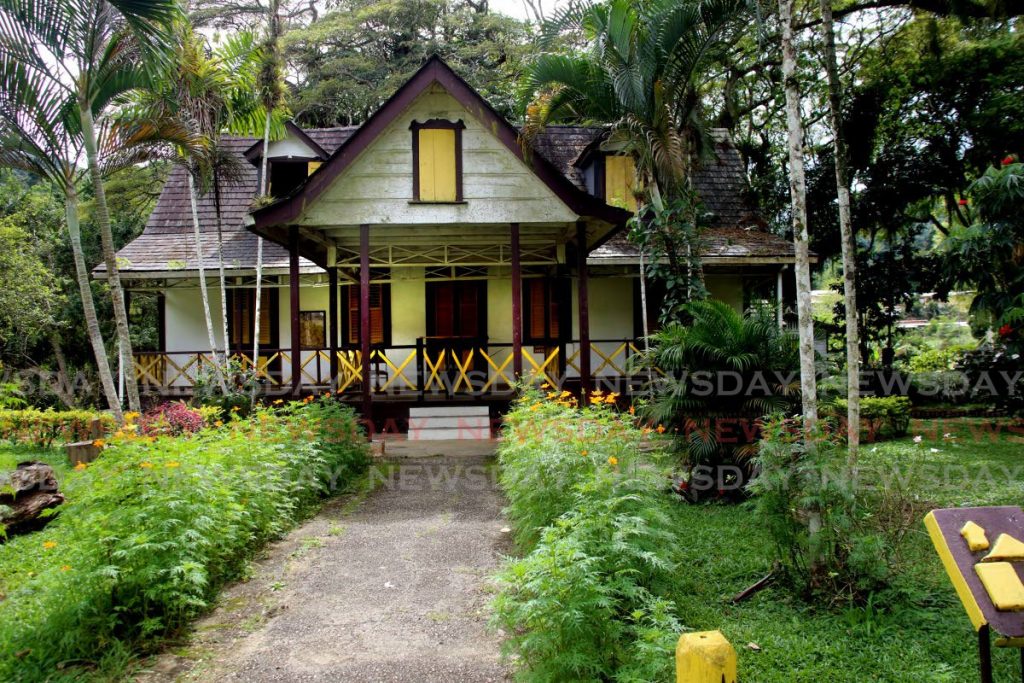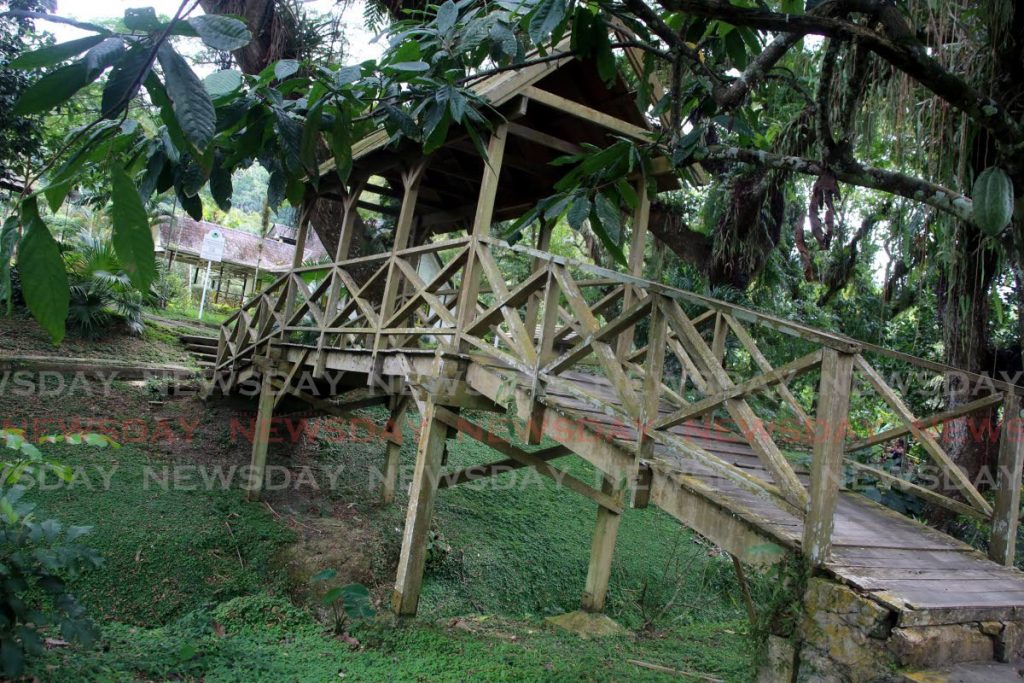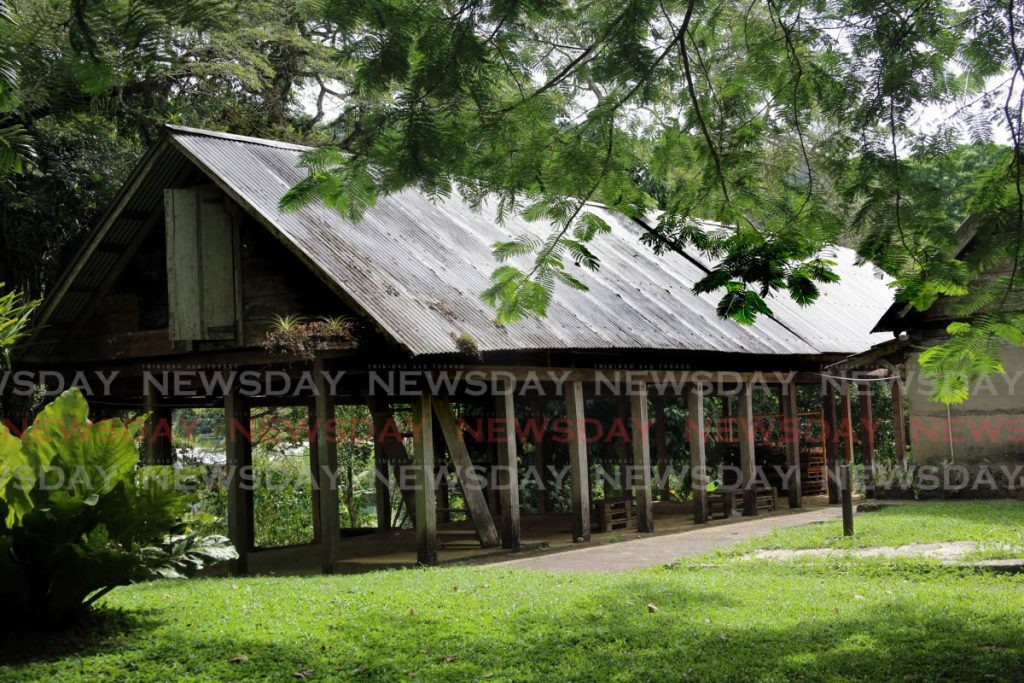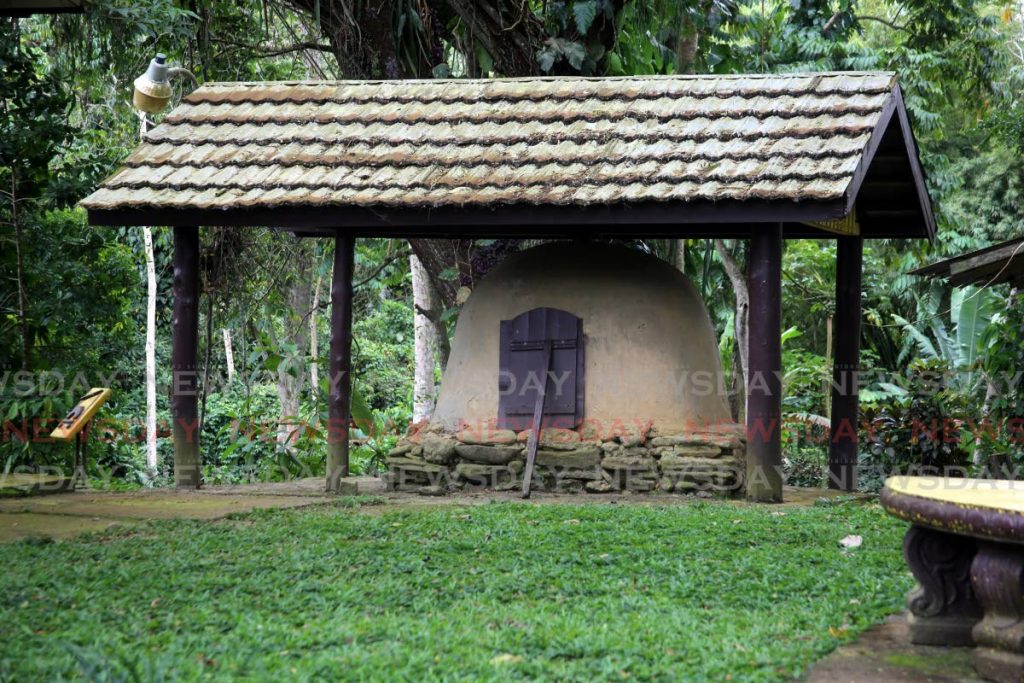Famed Lopinot House falls to ruins, MP vows to restore landmark

A stalwart in the community of Lopinot/La Pastora is fearful that the culture and traditions of the area may be soon lost if government and stakeholders continue to fail to act in revitalising its heritage and its famous Lopinot Historical Complex.
Former president of the village council Martin Gomez, 74, said there is dire need for intervention to save Lopinot, because of its significant contribution to TT’s history.
Sunday Newsday visited the community nestled in the lush green hills of the northern range. The long winding road to the Lopinot Historical Complex also known as Lopinot House was poorly maintained, trees and bamboo hung loosely over the roadway and there were many minor landslips along the route.
Lopinot House remained closed, after it was earmarked for repairs over a decade ago, but the immediate landscape on the property was well-kept by the Ministry of Agriculture, Land and Fisheries, who oversees its operations.
The property which sits on almost 1,721 square feet, according to the National Trust website has been listed on the heritage asset register. This is TT’s official list of historic sites deemed worthy of preservation.
But lack of funding has been cited as the main reason for the delay in its reconstruction and renovations, after the structure was transferred from the now defunct Tourism Development Company to the ministry.
The ministry said, “Restoration works to the roof of the house of Count de Lopinot were done in 2008. The scope of works was done by the Ministry of Works and Transport’s construction division (restoration works).
“In 2012, specifications were done by the Ministry of Works and Transport historical restoration unit for the refurbishment of the cocoa house. However, this project was never implemented due to a lack of funding and to present date both structural and remedial works are still required to buildings at the Lopinot Historical Complex.”

The cost of the restoration project is unknown as the authorities have not yet developed a budget and as such cannot engage in the tendering process.
Poor structural integrity of the buildings and roofing of the cocoa house were the issues identified to be tackled first.
“In 2008 when the roof of the house of Count de Lopinot was completed the old structure could not take the weight of the new roof leading to several cracks on the building. A decision was taken to close the building to members of the public for safety reasons. Remedial works to the cocoa house’s roof and structure.
The Forestry Division continues to receive funding under its public sector investment programme and recurrent programmes for the daily maintenance of the compound and operations of several national park sites, including Lopinot,” the ministry explained.
The cost of that piece of work was not disclosed.
Bearing this in mind the community, especially Gomez who has dedicated most of his life to building and maintaining their culture and traditions as well as investing labour and knowledge as a foreman into the maintenance of Lopinot House, said he was disheartened by the condition of the structure.
He said, “As a part of the village council we were able to have meetings with stakeholders to upgrade the facility. And they did on occasions before do upgrades, but I am not a part of the council now and there is minimal lobbying to push for the work to be done.

“It has been difficult to get any of the authorities to pay serious attention to our concerns. I do not feel good at all knowing we had such a good thing going and now no one taking us on.”
Gomez, who was also a parrandero with Los Amigo de Parrandero, said when work begins on Lopinot House only then he would feel at ease because too many promises were made over the years and nothing has materialised.
His daughter, Donna Mora who is the director of Lopinot’s Tourism Association said it was not just a lack of funding but internal conflict within the community that has also contributed to the downfall of Lopinot.
When things fall apart
She said it was unfortunate, but the best solution would be to have the site completely managed by an external entity. The association spearheads the Lopinot Heritage festival.
Mora lamented, “We are known for our parang and this has not happened in the last four years because there isn’t any camaraderie anymore. Everything has fallen apart.
“We have a complicated community where everybody is related in one way or the other. I think the pulling and tugging internally are the reasons for the failed heritage festival over the years.”
She called for the controlled use of and visit to the facility through appointments and the implementation of a fee structure so that funding can be generated to assist with its upkeep and other expenses.

“People should have to pay a fee to help maintain the site. Currently there is no such system in place. The state of the washrooms is in a dilapidated state. The forestry workers maintain the flora only on the compound,” she said.
MP for Lopinot/Bon Air Marvin Gonzales also expressed heartbreak over the condition of the Lopinot Heritage Complex, but said there were plans in the making to have the site turned into a fully functional tourist destination.
He told Sunday Newsday he was horrified when he saw the condition of the facility and immediately began drafting plans to restore it to its former glory.
He said, “It is actually one of the issues affecting the moral of the people. It bothers me that such a historical site not just for the people of Lopinot, but the country and the wider Caribbean has fallen into such a state of disrepair.
“While restoring the site is critical, it must also form part of an overall development for the Lopinot/La Pastora community. The cultural aspect of the community is waning away and everything Lopinot is known for is on the decline,” he noted.
Landmark best for tourism, OPM
Gonzales said holistic development was needed and that included proper management and reassignment of the facility to the correct ministry.
He explained that because of the decline in the country’s revenue for the 2021 financial year many of the plans he proposed for the area had to be halted.
“I am in the process of putting together a comprehensive plan to present the Ministry of Planning and Development, with a proposal to have the site restored and this included the road repairs,” he said.
Proper infrastructure and roads, he pointed out would encourage local, regional and international tourists. "Without these things attracting people to participate in activities would be a waste, no one would come,” he said.
Gonzales noted that apart from physical works, the site has to be moved under the purview of the ministry most appropriate to manage it.
“The historical site has nothing to do with agriculture and this is the reason why, in my view, the site was allowed to deteriorate and fell into disrepair over the years.”

“Part of my proposal is to remove that site from the Ministry of Agriculture and have it placed under the Ministry of Tourism or under the Office of the Prime Minister given its historical contribution.”
Other plans for the area are to have tours, festivals, workshops, artisan markets and a re-creation of Lopinot’s heritage festival throughout the year.
Development of a resort was also one of the suggestions by Gonzales who said there was adequate state lands to create a nature lover’s paradise.
He said, “There is also a parcel of state lands where a resort can be made to encourage nature seekers and lovers to invest in Lopinot.
“Once properly managed employment opportunities will become available to people in the community. Pastelles, crafts, coffee production, farming will now be explored again.
Gonzales pointed out that it will not happen immediately because his proposal will have to be worked into the national budget for 2022 and availability of that funding will the determine the pace of work.
As for Ministry of Agriculture’s plans to start work in 2021 on the complex, Gonzales said he was unaware of its status. The ministry did not give any indication of whether work will be done or even when it was carded to start.
Lopinot and a count
Lopinot which forms part of Arouca is home to the famous Lopinot Historical complex which was established in 1806 as part of the La Reconnaissance Estate or the Lopinot House.
It was said to have been built to accommodate the estate manager who was responsible for the distribution of wages among other things on the cocoa and coffee estates.

The compound, which houses a small museum, is dedicated to Charles Joseph, Comte Loppinot de la Fresilliere. The community centre, a football field and the cemetery borders nearby in which the count and his wife are buried. Not too far away is a river where locals usually relax. Its surroundings large have shady samaan trees with picnic benches underneath them.
In 1943, the property was occupied by an assigned state land officer after the government acquired the property.
In 2011, Ghost Hunters’ International and SyFy Channel featured the site on its show for paranormal activity around the legend of the count. It is said that the count is yet to find a resting place because of murder, torture and ill-treatment of slaves that worked for him. Planted not too far away from the cocoa house is “the Hanging Tree” – a cashew tree that is believed to be where the count would execute slaves when he found them no longer useful.
(History adapted from https://nationaltrust.tt/location/lopinot-house/ and
https://issuu.com/theprogressivemindsjournal/docs/pmj_january_2020_special_edition/s/10131681 )

Comments
"Famed Lopinot House falls to ruins, MP vows to restore landmark"